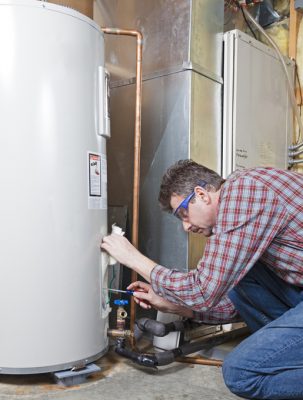Ensuring Longevity of Your Home's Hot Water System: Maintenance TipsMaking Sure Durability of Your Home's Hot Water System: Care Tips
Ensuring Longevity of Your Home's Hot Water System: Maintenance TipsMaking Sure Durability of Your Home's Hot Water System: Care Tips
Blog Article
Just about every person seems to have their personal assumption about Tips For Maintaining Your Hot Water Heater.

Hot water is essential for daily convenience, whether it's for a revitalizing shower or cleaning meals. To guarantee your warm water system runs efficiently and lasts longer, regular maintenance is crucial. This write-up provides practical tips and understandings on how to maintain your home's hot water system to prevent interruptions and expensive repair services.
Intro
Keeping your home's warm water system may appear daunting, yet with a couple of simple steps, you can ensure it operates smoothly for many years to find. This guide covers everything from comprehending your hot water system to DIY maintenance tips and knowing when to hire expert assistance.
Significance of Preserving Your Hot Water System
Regular maintenance not only extends the lifespan of your warm water system yet additionally guarantees it runs effectively. Overlooking maintenance can result in decreased efficiency, higher power costs, and also early failure of the system.
Indications Your Warm Water System Demands Upkeep
Understanding when your hot water system needs attention can protect against significant concerns. Watch out for signs such as irregular water temperature level, odd noises from the heater, or rusty water.
Comprehending Your Hot Water System
Prior to diving into upkeep tasks, it's helpful to comprehend the basic parts of your hot water system. Commonly, this includes the water heater itself, pipelines, anode rods, and temperature controls.
Month-to-month Maintenance Tasks
Normal regular monthly checks can aid catch small problems before they intensify.
Flushing the Hot Water Heater
Flushing your hot water heater removes debris buildup, enhancing efficiency and extending its life.
Monitoring and Replacing Anode Rods
Anode poles avoid deterioration inside the tank. Examining and changing them when worn is crucial.
Evaluating and Changing Temperature Setups
Changing the temperature settings ensures ideal performance and safety and security.
DIY Tips for Upkeep
You can carry out numerous upkeep tasks on your own to maintain your hot water system in leading condition.
Looking for Leaks
Regularly check pipes and links for leaks, as these can bring about water damage and greater bills.
Examining Pressure Alleviation Valves
Testing the stress relief valve guarantees it operates properly and protects against extreme stress buildup.
Shielding Pipes
Shielding warm water pipelines decreases warmth loss and can save power.
When to Call a Professional
While DIY upkeep is useful, some concerns need specialist proficiency.
Complex Concerns Calling For Professional Assistance
Instances include major leakages, electric problems, or if your hot water heater is continually underperforming.
Routine Expert Upkeep Benefits
Specialist maintenance can include detailed inspections, tune-ups, and making sure conformity with safety standards.
Final thought
Normal upkeep of your home's warm water system is crucial for efficiency, long life, and cost financial savings. By adhering to these pointers and recognizing when to look for specialist aid, you can make certain a trusted supply of warm water without unanticipated interruptions.
How to Maintain an Instant Hot Water Heater
Before tinkering with your hot water heater, make sure that it’s not powered on. You also have to turn off the main circuit breaker and shut off the main gas line to prevent accidents. Also turn off the water valves connected to your unit to prevent water from flowing into and out of the appliance. 2. When you’re done, you have to detach the purge valves’ caps. These look like the letter “T” and are situated on either side of the water valves. Doing so will release any pressure that has accumulated inside the valves while at the same time avoid hot water from shooting out and burning your skin. 3. When the purge valves’ caps are removed, you have to connect your hosing lines to the valves. Your unit should have come with three hoses but if it didn’t, you can purchase these things from any hardware or home repair shops. You can also get them from retail stores that sell water heating systems. Read the user’s manual and follow it to complete this task properly. When the hosing lines are connected, open the purge port’s valves. 4. You should never use harsh chemical cleaners or solutions when cleaning your unit. Make use of white vinegar instead. It should be undiluted and you’ll probably use about 2 gallons. 5. Now flush your water heater. This task should probably take about 40 minutes. We can’t give you specific directions for this because the procedure is carried out depending on the type, model and brand of your heater. With that being said, refer to the user’s manual. 6. When you’re done draining the unit, you have to turn off the purge port valves again. Remove the hosing lines that you earlier installed on each of the water valves. Put the valve caps (purge port) back in their respective places and be very careful so as not to damage the rubber discs that are found inside these caps. 7. Now that everything’s back in place, check your user’s manual again to find out how to reactivate your water heating system. 8. Once it is working, turn one of your hot water faucets on just to let air pass through the heater’s water supply pipes. Leave the tap on until water flows smoothly out of it. https://www.orrplumbing.com/blog/2014/september/how-to-maintain-an-instant-hot-water-heater/

As a serious reader on How to Maintain Your Water Heater & Prolong its Life, I thought sharing that piece of content was valuable. Sharing is good. Helping people is fun. Thank you for your time spent reading it.
Additional Resources Report this page